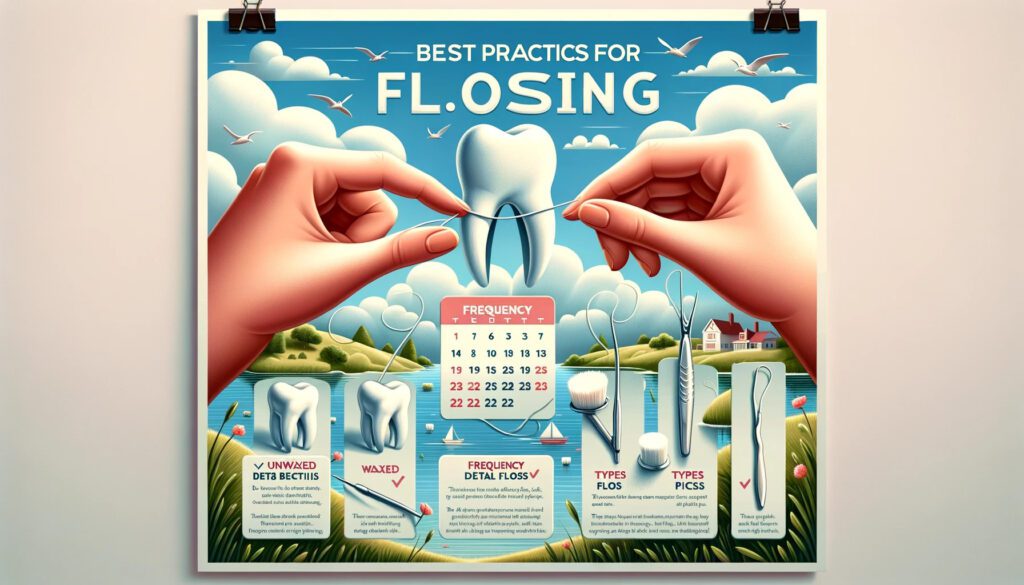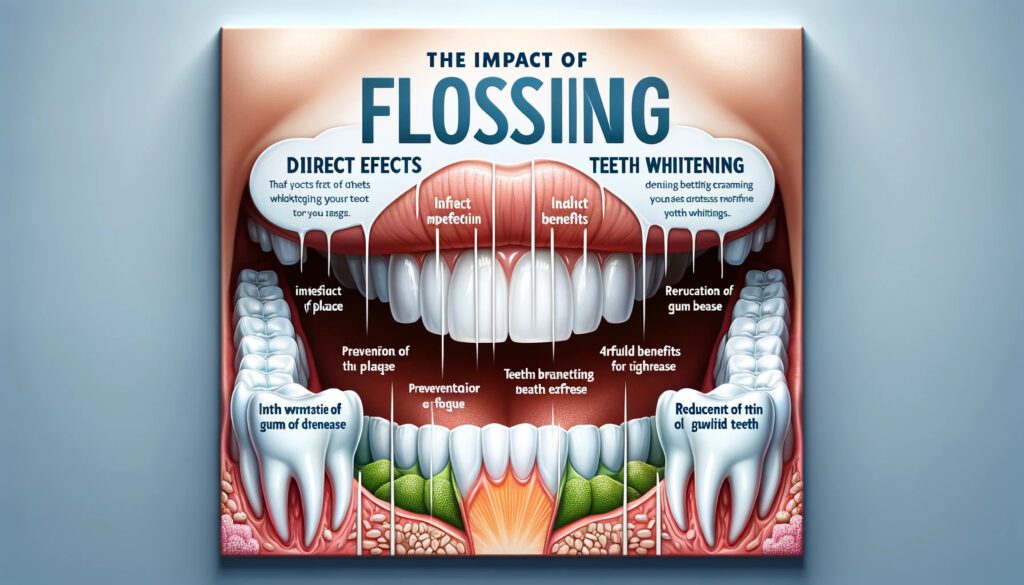Maintaining a bright, white smile is a common goal for many people, leading to questions about the effectiveness of various oral hygiene practices, including flossing, in achieving this aesthetic.
This detailed article explores the relationship between flossing and teeth whitening, backed by dental health insights.
Table of Contents
Introduction to Flossing
What is Flossing?
Flossing is a critical oral hygiene practice that involves using a thin thread to remove food particles, plaque, and bacteria from between the teeth and under the gumline, areas that a toothbrush cannot easily reach.
Importance of Regular Flossing
Regular flossing is essential for maintaining gum health, preventing periodontal disease, and reducing the risk of tooth decay. It is a fundamental component of oral hygiene recommended by dental professionals worldwide.
The Impact of Flossing on Teeth Whitening
Direct Effects on Teeth Color
While flossing is crucial for overall oral health, its direct impact on teeth whitening is minimal. Flossing primarily targets the areas between teeth and below the gumline, helping to prevent gum disease and tooth decay, but it does not directly whiten teeth in the same way that specialized whitening products do.
Indirect Benefits for Teeth Appearance
Although flossing does not change the intrinsic color of teeth, it plays a significant role in maintaining a brighter smile indirectly. By removing plaque and preventing tartar build-up, flossing helps keep the natural color of teeth and prevents the yellowing associated with dental plaque and tartar.
Prevention of Tartar Build-up
Tartar, also known as dental calculus, is hardened plaque that can discolor teeth. Regular flossing helps prevent the formation of tartar by removing plaque before it can harden, indirectly contributing to a whiter smile.
Reduction of Gum Disease
Gum disease can lead to receding gums and the exposure of the roots of the teeth, which are naturally yellower than the crown (the visible part of the tooth). By preventing gum disease, flossing helps maintain the integrity of the gumline and the overall appearance of the smile.

Enhancing Teeth Whitening through Flossing
Flossing Before Whitening
Flossing can enhance the effectiveness of teeth whitening procedures. By removing plaque and debris from between teeth, flossing ensures that whitening agents can evenly cover the surfaces of the teeth, leading to more uniform whitening results.
Regular Flossing Post-Whitening
Maintaining a regular flossing routine after teeth whitening treatments can prolong the effects by preventing the accumulation of stains and discoloration between teeth, which can detract from the overall whiteness of the smile.
Best Practices for Flossing
Proper Flossing Technique
Using the correct technique is crucial for effective flossing. Wrap the floss around each tooth in a “C” shape, gently moving it up and down and back and forth to dislodge food particles and plaque without damaging the gums.
Frequency of Flossing
Dental professionals recommend flossing at least once a day, preferably before bedtime, to remove the day’s accumulation of plaque and food particles.
Types of Floss
Various types of dental floss are available, including waxed, unwaxed, tape, and picks. Individuals should choose the type that feels comfortable and effective for their dental needs.

Check also: Can I Swim After Wisdom Teeth Removal?
Frequently Asked Questions
How often should I brush my teeth?
You should brush your teeth at least twice a day, once in the morning and once before bedtime, using fluoride toothpaste. Brushing after meals can also help remove food particles and plaque.
Is flossing really necessary?
Yes, flossing is essential for removing plaque and food particles from areas between the teeth and under the gumline where a toothbrush can’t reach. Dentists recommend flossing at least once a day.
Can mouthwash replace brushing and flossing?
No, mouthwash cannot replace brushing and flossing. It should be used as an adjunct to your oral hygiene routine to help freshen breath and reduce the risk of gum disease.
How often should I replace my toothbrush?
You should replace your toothbrush every three to four months, or sooner if the bristles become frayed. A worn toothbrush is less effective at cleaning your teeth.
What is plaque and why is it harmful?
Plaque is a sticky, colorless film of bacteria that forms on teeth. It produces acids that can lead to tooth decay, gum disease, and tartar build-up if not removed through regular brushing and flossing.
What are the signs of gum disease?
Signs of gum disease include red, swollen, or tender gums, bleeding while brushing or flossing, receding gums, persistent bad breath, and loose or shifting teeth.
How can I prevent tooth decay?
Prevent tooth decay by maintaining a good oral hygiene routine (brushing, flossing, rinsing), eating a balanced diet, avoiding frequent snacking on sugary foods, and visiting the dentist regularly for check-ups and cleanings.
What is the best way to whiten my teeth?
The best way to whiten teeth is through professional treatments from your dentist. Over-the-counter products can also be effective, but consult your dentist before starting any whitening regimen.
How often should I visit the dentist?
You should visit the dentist at least once every six months for a routine check-up and cleaning. If you have specific dental issues, you may need to visit more frequently.
Conclusion
While flossing does not directly whiten teeth, it plays an essential role in maintaining oral health and indirectly contributes to a brighter, healthier smile. By removing plaque and preventing tartar build-up, flossing helps preserve the natural color of teeth and enhances the effectiveness of whitening treatments.
Regular flossing, combined with proper brushing and occasional use of whitening products, can lead to a noticeably whiter smile and improved oral health.
